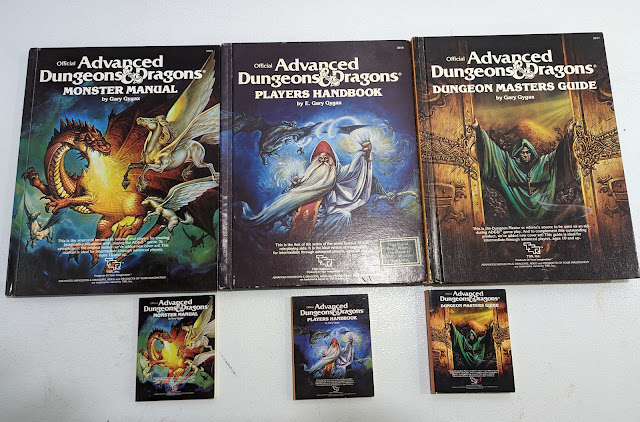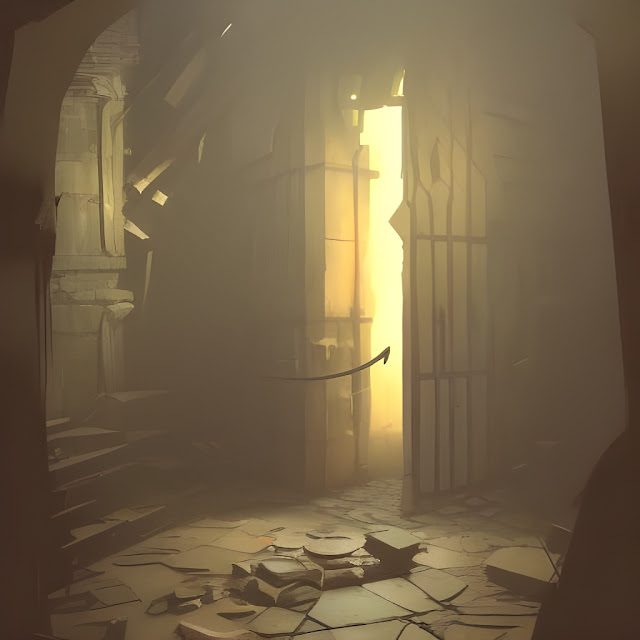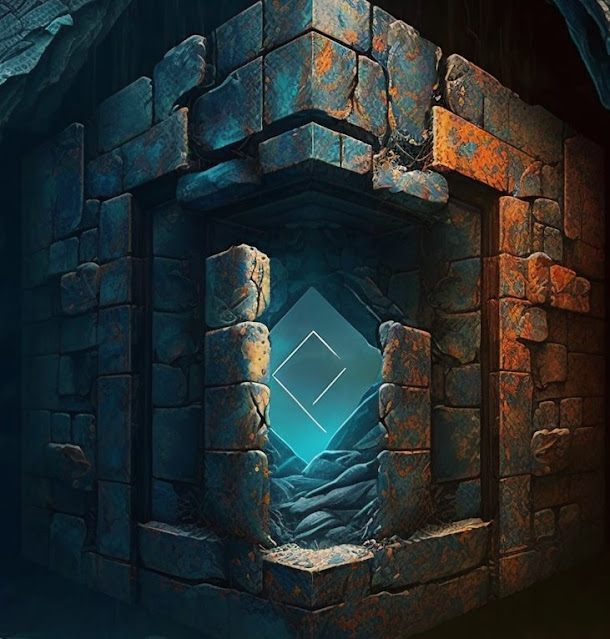The world is damned, and you do care
 Cy is a hell. The city is ripped apart by poverty and pollution. The haves, the corporates and the celebrities get to escape to their gated communities on the hills, whilst the have-nots exist in slums between the industrial districts and the enterprise regions where consumerism and corporate greed runs rampant. The industrial districts pump out a poisonous pall that never parts to reveal the sky, toxic waste is dumped into the harbour to float along with the fatbergs in the acidic waters, and nanoswarms and new diseases run rampant. In between the unchecked ecological emergencies and capitalist supremacy, everyone seems at war. The corporations against each other, gangs against each other and the cults, the cults against the militias, the militias against the rioters, and SecCorps against anyone they are paid to war against. There are rumours of a space rock which fell and unleashed a space poison, nuclear bombs exploded without a care… At the centre of it is ‘G0’. Supposedly created by ‘The Incident’. This is where the rock fell or this is where the bombs fell. It is walled off; access is denied upon pain of death. If the auto-turrets do not blast you apart, the Nanophreaks will infect you and rip you apart, pockets of nerve gas poison you, radiation dust twist your DNA… Yet smugglers use it as a means to transport illicit goods; cultists look for proof of their unhallowed beliefs; scientists conduct research in the hope of making a discovery worth selling to a corporation; and scrapheads scavenge the ruins of the past, the medieval ruins of Cy’s origins. There are worse things, let alone THAT NOISE that constantly sounds… Across all of this is the NET, a shared, consensual hallucination combination of Augmented Reality and Virtual Reality where you can buy what they want, worship the latest craze or faith or none at all, and even hack your opinion. Anyone can access the NET via their Retinal Communication Device and everyone is interfaced, injected, infected, and infested with something, and the cybertech is just another vector. This CYstainable Planet™ Certified dystopia is a future of Miserable Headlines amongst the untrammelled tumult of terrible news and corporate corruption. They say that one too many Miserable Headlines, one too many Actual Terrible Truths revealed, and the world ends. Maybe that will be a blessed relief, or maybe that it is what they want…
Cy is a hell. The city is ripped apart by poverty and pollution. The haves, the corporates and the celebrities get to escape to their gated communities on the hills, whilst the have-nots exist in slums between the industrial districts and the enterprise regions where consumerism and corporate greed runs rampant. The industrial districts pump out a poisonous pall that never parts to reveal the sky, toxic waste is dumped into the harbour to float along with the fatbergs in the acidic waters, and nanoswarms and new diseases run rampant. In between the unchecked ecological emergencies and capitalist supremacy, everyone seems at war. The corporations against each other, gangs against each other and the cults, the cults against the militias, the militias against the rioters, and SecCorps against anyone they are paid to war against. There are rumours of a space rock which fell and unleashed a space poison, nuclear bombs exploded without a care… At the centre of it is ‘G0’. Supposedly created by ‘The Incident’. This is where the rock fell or this is where the bombs fell. It is walled off; access is denied upon pain of death. If the auto-turrets do not blast you apart, the Nanophreaks will infect you and rip you apart, pockets of nerve gas poison you, radiation dust twist your DNA… Yet smugglers use it as a means to transport illicit goods; cultists look for proof of their unhallowed beliefs; scientists conduct research in the hope of making a discovery worth selling to a corporation; and scrapheads scavenge the ruins of the past, the medieval ruins of Cy’s origins. There are worse things, let alone THAT NOISE that constantly sounds… Across all of this is the NET, a shared, consensual hallucination combination of Augmented Reality and Virtual Reality where you can buy what they want, worship the latest craze or faith or none at all, and even hack your opinion. Anyone can access the NET via their Retinal Communication Device and everyone is interfaced, injected, infected, and infested with something, and the cybertech is just another vector. This CYstainable Planet™ Certified dystopia is a future of Miserable Headlines amongst the untrammelled tumult of terrible news and corporate corruption. They say that one too many Miserable Headlines, one too many Actual Terrible Truths revealed, and the world ends. Maybe that will be a blessed relief, or maybe that it is what they want…This is the set-up for CY_BORG, a cyberpunk purgatory that is modelled upon Mörk Borg, the Swedish pre-apocalypse Old School Renaissance retroclone designed by Ockult Örtmästare Games and Stockholm Kartell and published by Free League Publishing. It is another doom driven roleplaying game, set in a nightmarish future in which the existence of the medieval ruins beg the question, is Cy the future of the city of Galgenbeck in the land of Tveland? Or is the city of Galgenbeck in the land of Tveland with its prophecies of the Two-Headed Basilisks just one more MMORPG in the NET. Or even CY_BORG itself a virtual reality simulation gaming out a future and waiting for a reset? Published following a Kickstarter campaign, CY_BORG is a roleplaying game in which the Player Characters kick out against the consumerist conspiracy and the supremacy of corporate capitalism run rampant and their government, police, and mercenary tools. They are Forsaken Gang-Goons, the Shunned Nanomancers, Burned Hackers, Discharged Corp Killers, Orphaned Gearheads, and Renegade Cyberslashers. Their loyalties are not to the system or the man. Even as they take jobs from one Mister Johansen or Ms. Johansen to keep afloat, to maintain the struggle, they want to burn it all down, destroy the system, and kill and die to do it. If they fail, there will always someone else to assume the cause. Unless that last Miserable Headline leads the breaking news and CY ends…
Yet much like, what grabs you from the start is the look of CY_BORG. It employs the same Artpunk style, but here the bold swathes of neon colour are constantly broken as if the artwork is under assault from the nanites, toxins, and chemicals affecting the city of CY itself. This is less heavy metal and more punk; its jagged uncertainty only contributing to the tone and feel of the book. Similarly, there no explanation as to what a roleplaying game is and what roleplaying is. Once you open the book, you are straight into the game. And that is fine. Neither Mörk Borg nor CY_BORG are roleplaying games for anyone new to the hobby. One other difference between CY_BORG and Mörk Borg is that it does not start with the end of the world. Whilst the last Miserable Headline will mark the end of the CY, the rate at which they can appear can be adjusted by the Game Master for a longer or shorter game.
A Player Character in CY_BORG is defined by five Abilities—Agility, Knowledge, Presence, Strength, and Toughness. These are rated between -3 and +3. He also has some cash and some cheap gear as well as Retinal Communication Device. A Player Character also has a Class, of which there are five—Forsaken Gang-Goon, Shunned Nanomancer, Burned Hacker, Discharged Corp Killer, Orphaned Gearhead, and Renegade Cyberslasher. Each provides a bonus to an Ability, a value for his Hit Points, plus one or more items of equipment, including armour. For example, the Shunned Nanomancer also gains a reason why he got infected, such as spending a night practising profane rites with neo-pagan cultists or kidnapped and subjected to horrible experiments and a strange leaf-looking blade which inflicts wounds that bleed or an elongated, pointed skull and semi-translucent skin which enables his brain to shine when the Shunned Nanomancer is thinking. The creation process is quick and easy and Player Characters are simple to replace. A player rolls three six-sided dice for his character’s Abilities, then rolls for cash and gear, then various aspects of the Class, weapon and armour, and lastly debt and to whom it is owed. Elements such as style, feature, wants, quirk, and current obsession can also be rolled for, but are optional.
Name: Kratar
Class: Discharged Corp Killer
Agility +0 Knowledge +0 Presence -1 Strength +1 Toughness +3
Toughness: 8
Glitches: 2
Armour: Combat Armor (Tier III) with A_HST auto-injector
Weapon: Monosword
Item Stolen From The Corp: Prototype Smart™ Assault Rifle
Deployment: PeriGlacial SecCorp (Plundering released gas and bioweapons)
Style: Kill Mode Feature: Unnatural Eyes Wants: Anarchy Quirk: Rapid Blinking
Current Obsession: Belts
Debts: 7000¤ (owed to fixer cops on the payroll)
Cash: 110¤
Gear: CWPC Metro Card, Small Bottle of Pulverised Acid, Tiny Surveillance Drone (300 m)
Mechanically, CY_BORG is simple. A player rolls a twenty-sided die, modifies the result by one of his character’s Abilities, and attempts to beat a Difficulty Rating. A normal Difficulty Rating is twelve, but it can go as low as six or a Simple Difficulty Rating or as high as eighteen or an Almost Impossible Difficulty Rating. The Difficulty Rating may go up or down depending on the situation, but whatever the situation, the player always rolls, even in combat. So, a player will roll for his character to hit in melee using his Strength and his Agility to avoid being hit, whereas Agility is used to both hit and avoid being hit in ranged combat. Autofire in gun combat is kept simple with the first successful hit allowing a second roll and so on up to three hits. So essentially, more three round bursts than full auto. Simple rules also allow for criticals, fumbles, and ammunition use. Optional rules take into account cover, aiming, range, hits always hurting, and suppressive fire. The rules are quick and dirty rather than necessarily realistic, but arguably CY_BORG is gritty enough. Armour is represented by a die value, from -d2 for light armour to -d6 for heavy armour, representing the amount of damage it stops. Medium and heavy armour each add a modifier to any Agility action by the character, including defending himself. This is pleasingly simple and offers a character some tactical choice—just when is it better to avoid taking the blows or avoid taking the damage? In addition, each Player Character has one or more Glitches. These are spent to inflict maximum damage in an attack, enable a reroll of any die, lower damage done to the Player Character, neutralise a critical or a fumble, or decrease the difficulty of a skill test.
The genre specific rules of CY_BORG cover cybertech, drugs, and hacking. Both drugs and cybertech are covered in a page each, and it should be noted that not every Player Character begins play with any cybertech. Only the Renegade Cyberslasher begins play with any cybertech, although a Player Character may have some as a result of a roll for his gear. The rules for hacking are given a bit more attention though. This is no surprise, but unlike many other Cyberpunk-themed roleplaying games where they grind play to a halt as the hacker Player Character is run through an entire little rules subsystem all of his very own, here they are covered in just four pages—and two of those are devoted to possible backlashes if a hacking roll is fumbled. In CY_BORG hacking is done on the spot by a hacker activating Apps, custom-made cartridges and cassettes, slotted into his cyberdeck, for example, the Nok_Nok App opens a nearby door whilst the CTechAttak App inflicts damage on targets connected to the network. To do this, the hacker has to be jacked not the cyberdeck and the more an App is used, the more likely it has of causing a fumble and inflicting a backlash, such as corrupting the hacker’s Retinal Communication Device or the hacker getting identified by a hacker collective and being extorted.
In addition, it is possible to have Nanopowers, such as Psychic Scalpels which inflict damage or a half metre cube of inorganic matter can be reduced to dust. These abilities are rumoured to be from an infection of alien bacteria riding nanobots that has swept the city of CY following The Incident. In addition to the power granted by the infection, the user suffers an infestation, like Gills or Barbed Skeleton. They have two effects. One is permanent, such as the being able to breath underwater for the Gills and for Barbed Skeleton, having sharp pieces of bone piercing the skin around the sufferer’s joints, hindering his movement, unless he grinds them down. The other is a triggered effect when excess damage is suffered, which prevents the sufferer from breathing air if he has Gills and a painful growth spurt of sharp bone for Barbed Skeleton.
For the Game Master, there is section of opponents, from Generic SecOp or Gang Goons and United Citadel Security Operatives, through raging menaces, enhanced beasts, drones, and cydroids to combat vehicles, mechs, and ghosts. Then there is the extensive mission generator, based on Backswords & Bucklers: Adventuring in Gloriana’s Britain, which when combined with the random tables for generating corporations and events, enables the Game Master to generate the basics of numerous scenarios. CY_BORG includes a sample mission, ‘Lucky Flight Takedown’, which has the Player Characters take a job from a shady salaryman to destroy the influence of a newly opened casino upon a neighbourhood. It is a strike mission, one which the Player Characters are tasked with attempting with some delicacy, rather than simply conducting a smash and grab. So, although in some ways it reads as a dungeon similar to that of Mörk Borg, this is more demanding and thoughtful and if gone at in the wrong way, will likely teach the Player Characters just how fragile they can be. Notes are included which could link to future scenarios.
Physically, CY_BORG does suffer to an extent to the same issues as Mörk Borg. Their Artpunk style does not always make the content the easiest to access, so the summary of the mechanics included inside the back cover is a good idea. The illustrations are often heavy and oppressive, veering between the doom metal genre and the doom punk genre, both highlighted by neon and blighted by poisons. Overall, CY_BORG is still a handy little rulebook.
CY_BORG brings the Grim Dark to the cyberpunk genre, stripping back the complexities of both the genre and its associated mechanics, but revving up the maelstrom of the media, the unbridled ambition and greed of the corporations, the suffering of the have-nots, and driving them towards another doom. Its combination of brutal, in-your-face dread, and despair never really lets up and even as the often already unpleasant Player Characters are damaged by this, they do care about the state of CY, if not the world. CY_BORG is a roleplaying game in which the world appears free of moral certainties—except one. Corporations are evil, capitalism will be death of us all, and they need to be smashed and their crimes revealed.























